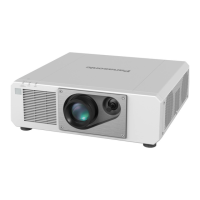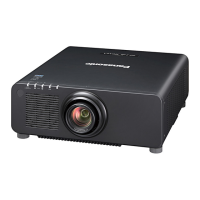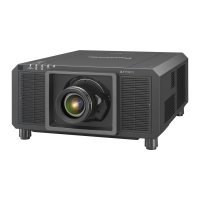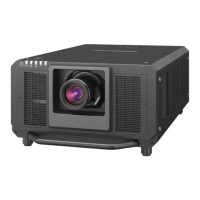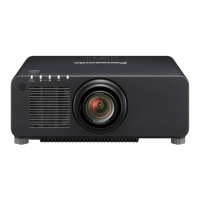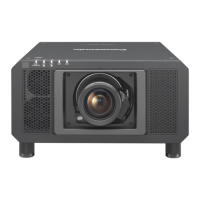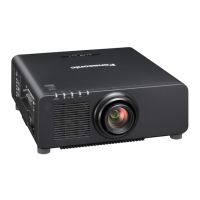Chapter 4 Settings — [POSITION] menu
106 - ENGLISH
[16:9]
Displays images with the aspect ratio converted to 16:9 when standard signals are input
*1
. When
wide-screen signals are input
*2
, the images are displayed without changing the input aspect ratio.
[4:3]
Displays images without changing the aspect ratio when standard signals are input
*1
. When wide-
screen signals are input
*2
, and [4:3] is selected in [SCREEN FORMAT], the image is displayed with
the aspect ratio converted to 4:3. When anything other than [4:3] is selected in [SCREEN FORMAT],
the images are reduced to be displayed without changing input aspect ratio so that the images will t
in the 4:3 screen.
[H FIT]
Displays images using the entire width of the screen range selected in [SCREEN FORMAT]. When
signals have the aspect ratio vertically longer than the screen aspect ratio selected in [SCREEN
FORMAT], the images are displayed with the top and bottom parts cut o.
[V FIT]
Displays images using the entire height of the screen range selected in [SCREEN FORMAT]. When
signals have the aspect ratio horizontally longer than the aspect ratio of the screen selected in
[SCREEN FORMAT], the images are displayed with the right and left parts cut o.
[HV FIT]
Displays images in the entire screen range selected in [SCREEN FORMAT]. When the aspect ratio of
the input signals diers from that of the screen range, the images are displayed with the aspect ratio
converted to that of the screen selected in [SCREEN FORMAT].
*1 [Standard signals are input signals with an aspect ratio of 4:3 or 5:4.
*2 Wide-screen signals are input signals with an aspect ratio of 16:10, 16:9, 15:9 or 15:10.
Note
f If an aspect ratio which is dierent from the aspect ratio for the input signals is selected, the images will appear dierently from the originals.
Be careful of this when selecting the aspect ratio.
f If using the projector in places such as cafes or hotels to display programs for a commercial purpose or for public presentation, note that
adjusting the aspect ratio or using the zoom function to change the screen images may be an infringement of the rights of the original
copyright owner for that program under copyright protection laws. Take care when using a function of the projector such as the aspect ratio
adjustment and zoom function.
f If conventional 4:3 images which are not wide-screen images are displayed on a wide screen, the edges of the images may not be visible or
they may become distorted. Such images should be viewed as with an aspect ratio of 4:3 in the original format intended by the creator of the
images.
[ZOOM]
You can adjust the image size.
The adjustments in [ZOOM] will dier depending on the setting of the [POSITION] menu → [ASPECT].
When [ASPECT] is set to other than [DEFAULT] and [THROUGH]
1) Press as to select [ZOOM].
2) Press the <ENTER> button.
f The [ZOOM] screen is displayed.
3) Press as to select [INTERLOCKED].
4) Press qw to switch the item.
[OFF] Sets the [VERTICAL] and [HORIZONTAL] zoom ratio.
[ON]
Uses [BOTH] to set zoom ratio. Image can be enlarged or reduced vertically and horizontally at the
same magnication.
5) Press as to select [VERTICAL] or [HORIZONTAL].
f If [ON] is selected, select [BOTH].
6) Press qw to adjust.
Note
f When the [POSITION] menu → [ASPECT] is set to [THROUGH], [ZOOM] cannot be adjusted.
When [ASPECT] is set to [DEFAULT]
1) Press as to select [ZOOM].
2) Press the <ENTER> button.
f The [ZOOM] screen is displayed.
3) Press as to select [MODE].
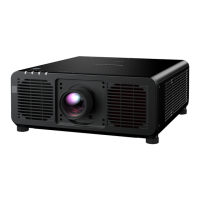
